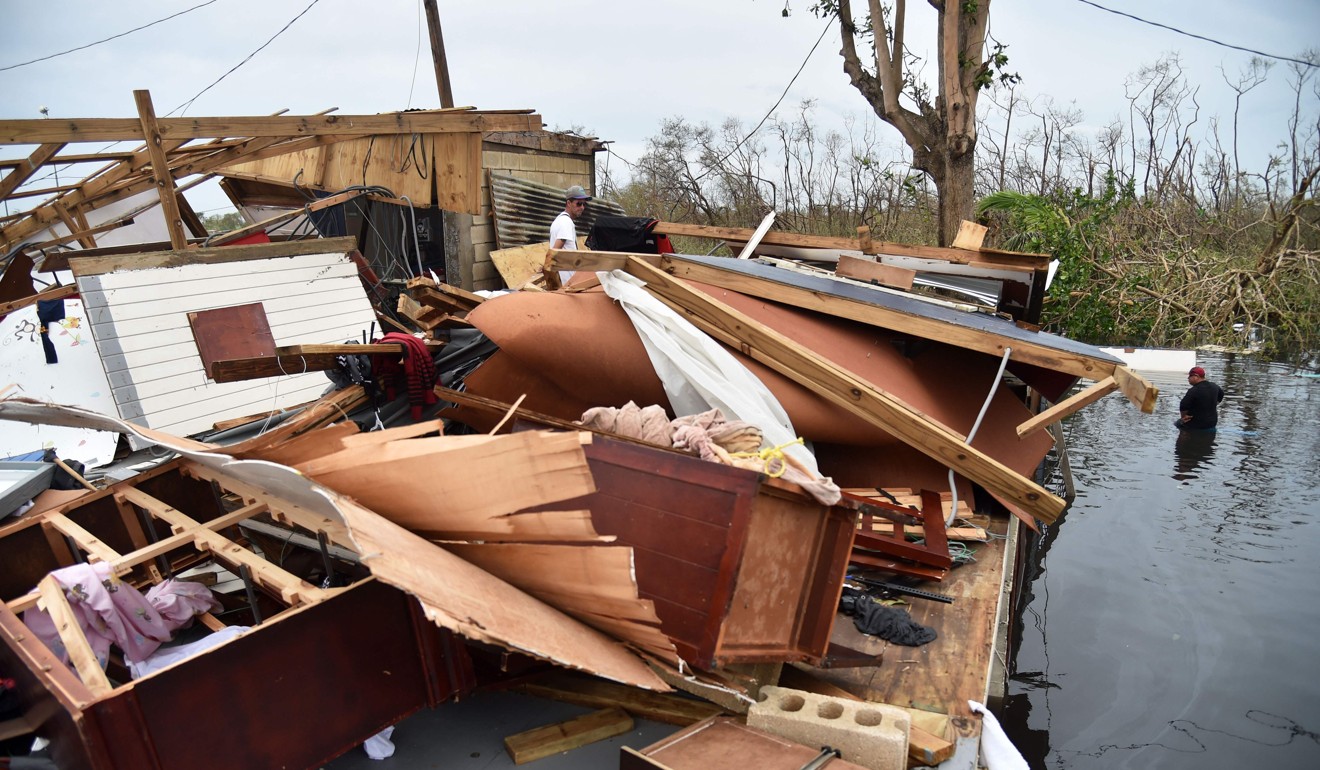
Hurricane Maria leaves Puerto Rico ‘absolutely obliterated’ with 13 dead and hundreds needing rescue
Puerto Rico was on Friday battling dangerous flooding after Hurricane Maria ravaged the island, with the death toll rising to 13 and authorities rescuing nearly 700 people from high waters.
Puerto Rico Governor Ricardo Rossello called Maria the most devastating storm in a century after it destroyed the US territory’s electricity and telecommunications infrastructure.
“Part of the island is lacking communications so what we have are some preliminary assessments about 13 deaths at this juncture,” he told CNN early on Friday.
“We’re 24 hours post-hurricane warning and right now our efforts are to make sure we have everybody safe, that we can rescue people. Our efforts have already produced almost 700 rescues so we’re clearly focused on that.”

The National Hurricane Centre said some areas in Puerto Rico could see more than a metre of rain from Maria, and Rossello warned of dangerous mudslides brought on by the deluge.
“We have a lot of flooding, we have reports of complete devastation of vulnerable housing. Of course it’s still raining over here.”
Maria was blamed for at least 33 deaths, including 15 in Dominica, three in Haiti and two in Guadeloupe.
“Puerto Rico is absolutely obliterated,” US President Donald Trump told reporters on Thursday after declaring the territory of 3.4 million people a disaster area – a move that will free up emergency relief funding.
“Puerto Rico is in a very, very, very tough shape,” he said.
The torrential rain had turned some roads into muddy brown rivers, impassable to all but the largest of vehicles.
Toppled trees, street signs and power cables were strewn across roads that were also littered with debris.

“We all lived through the worst night of our lives, but Puerto Ricans have great inner strength,” said Iris Rivera, 53, in San Juan.
“Everyone is helping by cleaning up, directing traffic and supporting their neighbours.”
As of early Friday, Maria was a category 3 hurricane with winds of 205km/h, churning in the sea about 56km east of Grand Turk Island in the Turks and Caicos.
Heavy rains and high winds began hitting the archipelago, a British territory, on Thursday afternoon.
The government opened new shelters after several buildings, which had been used during Hurricane Irma earlier this month, were damaged and authorities feared they might not hold up under another fierce storm.
In the Dominican Republic, the heavy rains triggered flooding as rivers broke their banks. High winds blew trees and electrical pylons down, and 140,000 people were left without power, the government said. About 17,000 have been evacuated from their homes.
Ricardo Ramos, who heads Puerto Rico’s electricity board, said it could take months before power is fully restored on the island.
“The system ... has been totally destroyed,” he said of the electricity grid.
While the island had suffered major blackouts in previous hurricanes, Ramos said the impact would be felt much more keenly this time.

“I guess it’s a good time for dads to buy a glove and ball, and change the way you entertain your children and the way you are going to go to school and the way you are going to cook,” Ramos said.
Following reports of looting, Rossello imposed an overnight curfew, from 6pm to 6am, which will stay in place until Saturday.
Maria has already torn through several Caribbean islands, claiming the highest toll on Dominica, which has a population of around 72,000 and has been largely cut off from the outside world.
“So far, we would have buried in excess of 15 people,” Prime Minister Roosevelt Skerrit said.
“If there (are) no other fatalities, it is a miracle,” he said.
“We have no water, no electricity, very limited communications.”
Aerial footage showed debris from damaged buildings scattered across the island and many structures with their roofs ripped off. Trees were snapped in half or ripped out of the ground.
Residents on Thursday were busy removing mud from their homes and businesses, while laundry was hung out to dry on the frames of partly destroyed homes and along downed utility cables.
Skerrit appealed for desperately needed supplies and helicopters to ferry them to cut-off communities.
“These hurricanes are becoming stronger than ever and more powerful than ever ... And we really need, all of us, to understand that these issues are of greater concern to small islands like ours.
“We are very, very vulnerable,” said Skerrit, who himself had to be rescued during the hurricane which blew off the roof off his home.

.png?itok=arIb17P0)